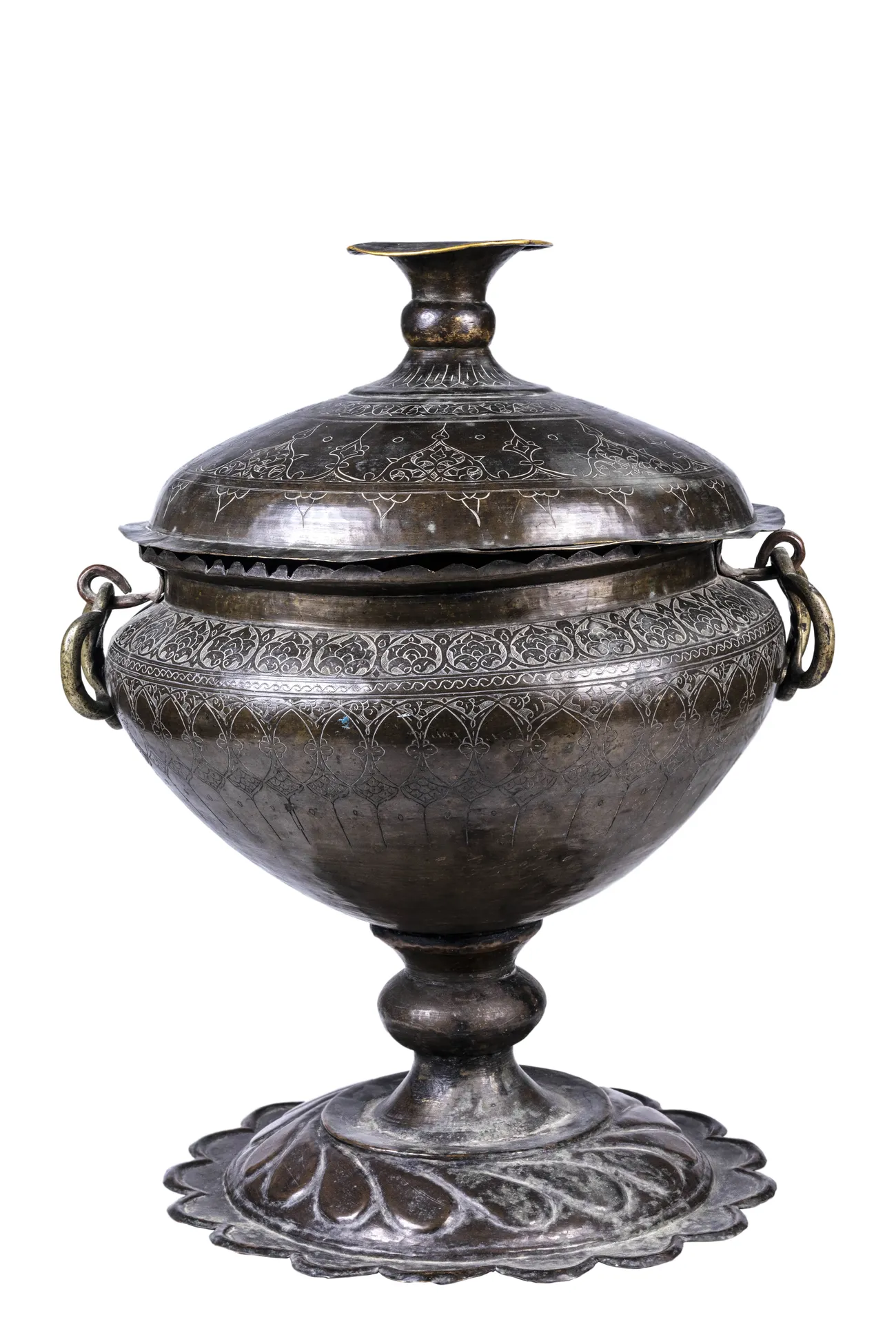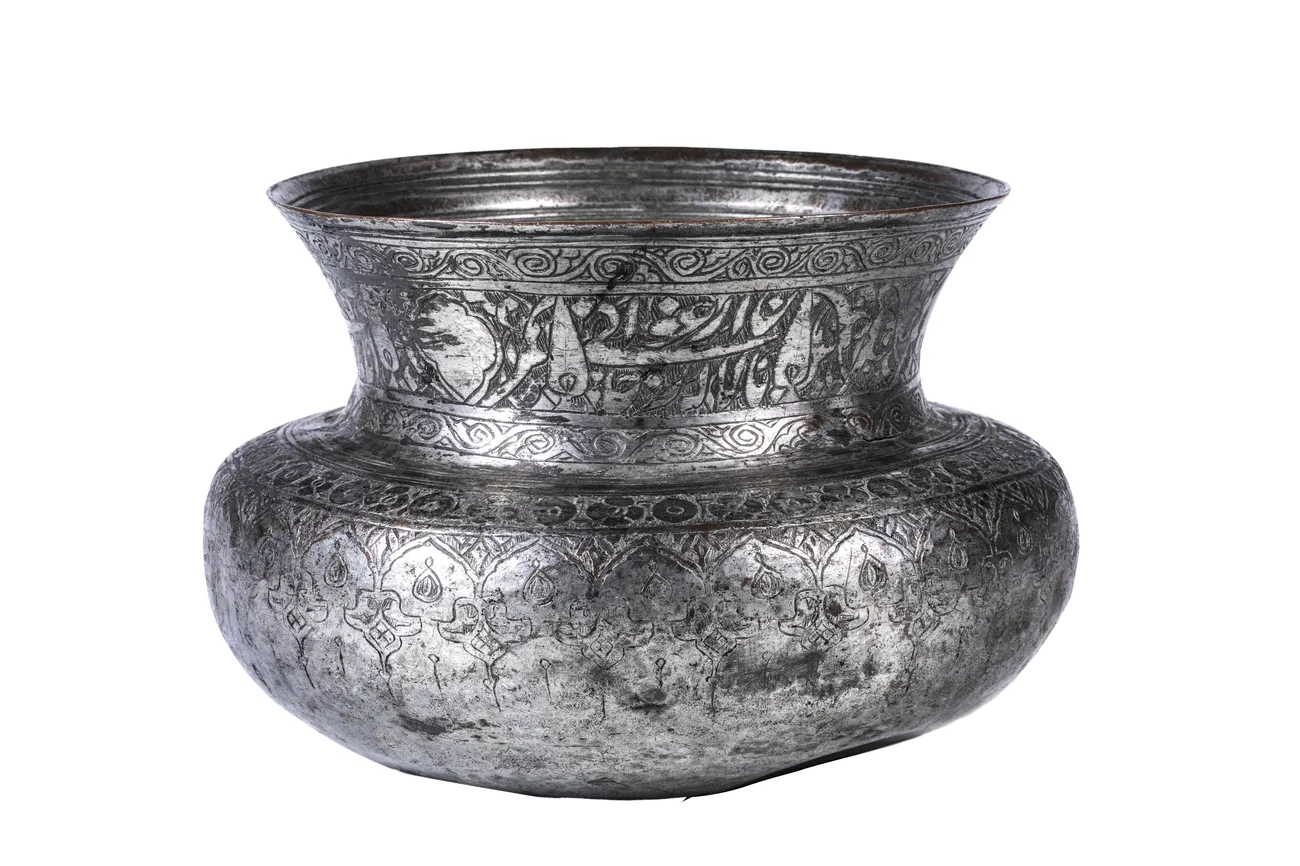The types of kalams are varied and were used depending on the nature of the pattern and the technique of applying the pattern. The main principle of constructing ornamentation of Uzbek embossed products is expressed in limiting the main ornamental theme to border stripes. Even the pattern adorning the body of the vessel is limited from below by narrow ornamental bands or protruding frills. The craftsman as if afraid of the unrestrained, riotous flow of the elements of the pattern directs it into the channel of the restraining flat banks. This combination of unpretentious, free-graceful play of patterns and strict, restrained intonations of the stripes bordering them is one of the remarkable aspects in the perception of chased works of Uzbek masters. The motifs of the ornamentation of embossed products are traditional for all types of Uzbek decorative and applied arts.
These are mainly plant, geometric and less often zoomorphic patterns. By the late 19th – early 20th centuries, images of architectural monuments appeared in the minting of Fergana, and then of Bukhara and Samarkand, the craftsmen of Kokand introduced images of fantastic monsters transferred from the lithographic products popular at that time.
The most common motif of Uzbek pattern is the floral islimi and its varieties consisting of curly stems, patterns of flowers and leaves. Islimi patterns cover medallions, rosettes, geometric shapes, as well as various friezes and border stripes. Zoomorphic images were used in a stylized form. These were no longer images of animals but only their parts: chashmi bul-bul (nightingale‘s eye), kuchkorak (ram‘s horns), pushti balyk (fish scales), etc. It is possible to see a more or less clearly readable image of animals, birds or parts of their body in details of the various handles and spouts made by the foundry workers. Geometric pattern is often a service load in chasing.
You can learn more about the topic in the book-album “The Collection of the Kokand State Museum-Reserve” (Volume XLIII) in the series “The Cultural Legacy of Uzbekistan in the World Collections”.
The main sponsor of the project is the oilfield services company Eriell-Group.


